Abstract
Children with thermal burns covering 30% or more of the body surface area were alternately resuscitated with either hypertonic lactated saline (HLS) or lactated Ringer's solution (LRS). Parameters sequentially measured and calculated included: 1) serum and urine electrolyte concentrations, 2) serum and urine osmolalities, 3) arterial blood gases, 4) total and fractional serum proteins, 5) blood urea nitrogen, complete blood count and blood sugar concentration, 6) changes in body weight, 7) sodium, potassium and water balance. The water load received by the HLS group was significantly less through 48 hours postburn (49% at 8 hours, 44% at 24 hours and 38% at 48 hours postburn). Although the HLS group received significantly more sodium than the LRS group, there was no difference in sodium balance at 48 hours postburn. This is explained by the fact that the HLS group, at 48 hours postburn, retained significantly less of the administered sodium load (69% vs. 83%). Positive water balance was significantly greater in the LR group for the first 48 hours postburn. This study suggests that current hypotonic fluid regimens for burn resuscitation contain water in excess of that required for proper resuscitation. Severely burned children may be safely and efficiently resuscitated with conventional salt loads and one-third less than usual water loads.
Full text
PDF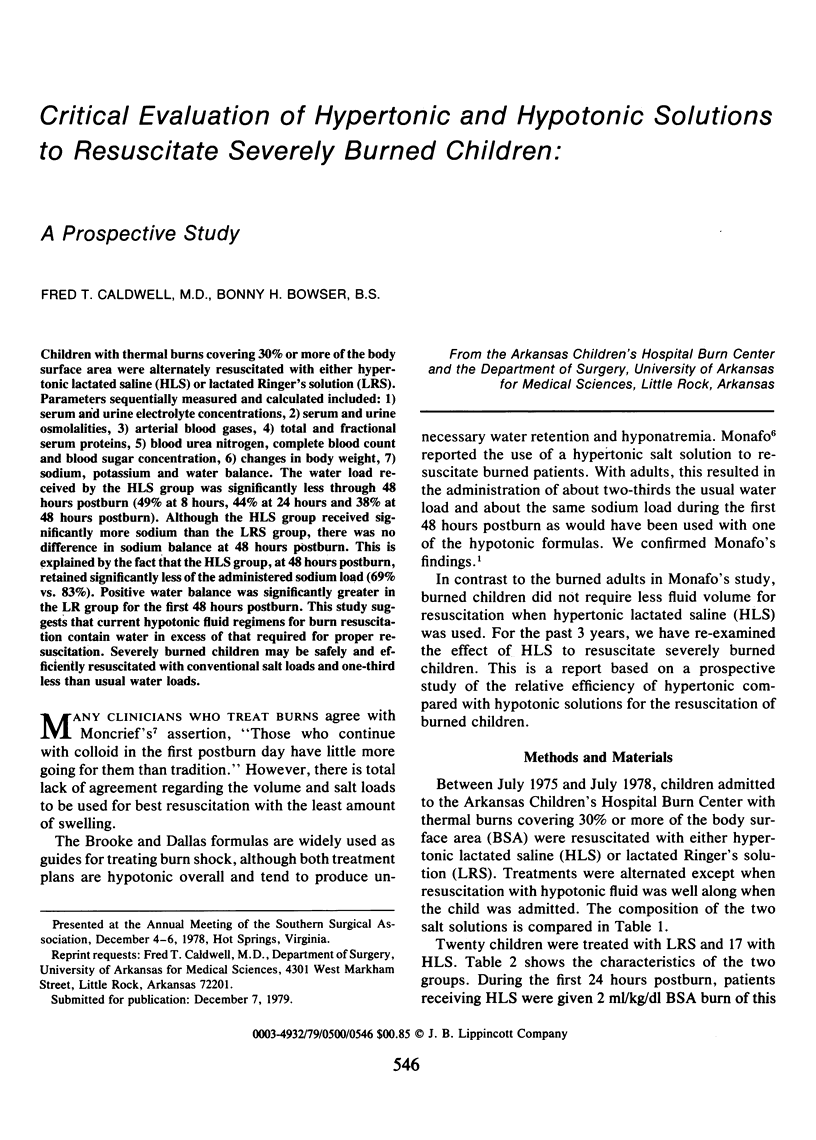
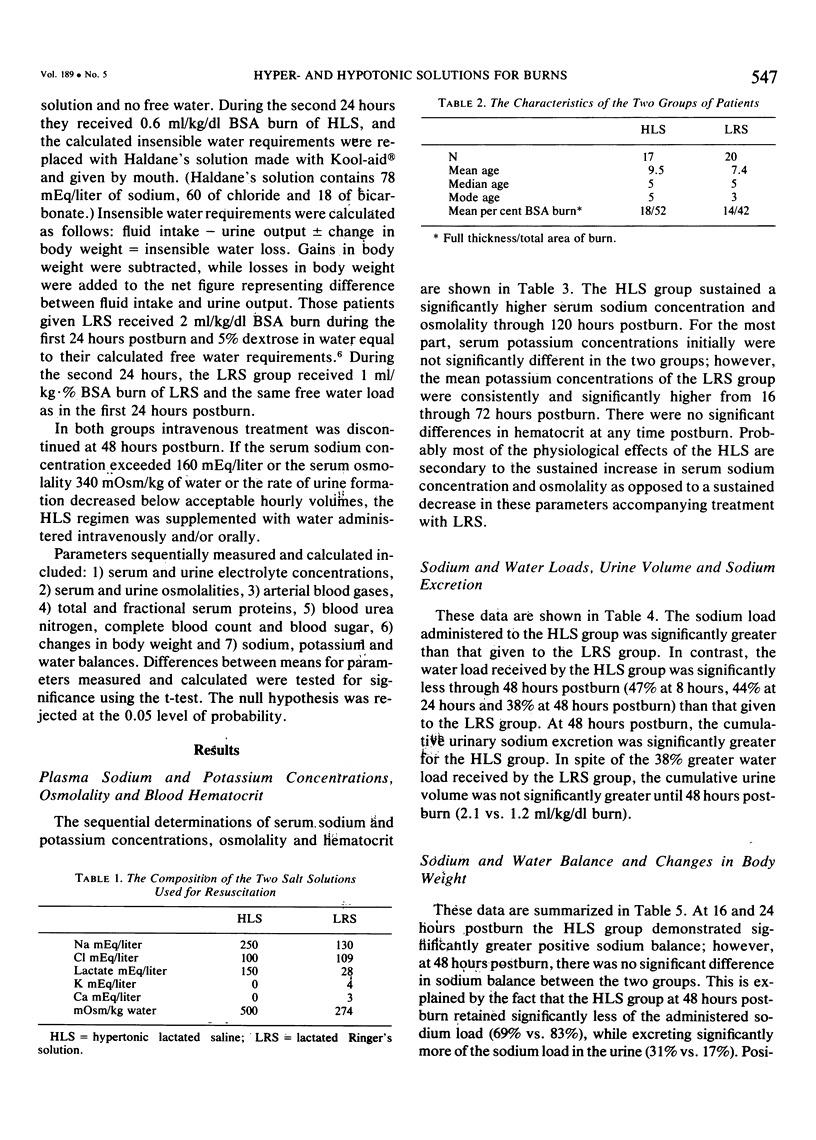
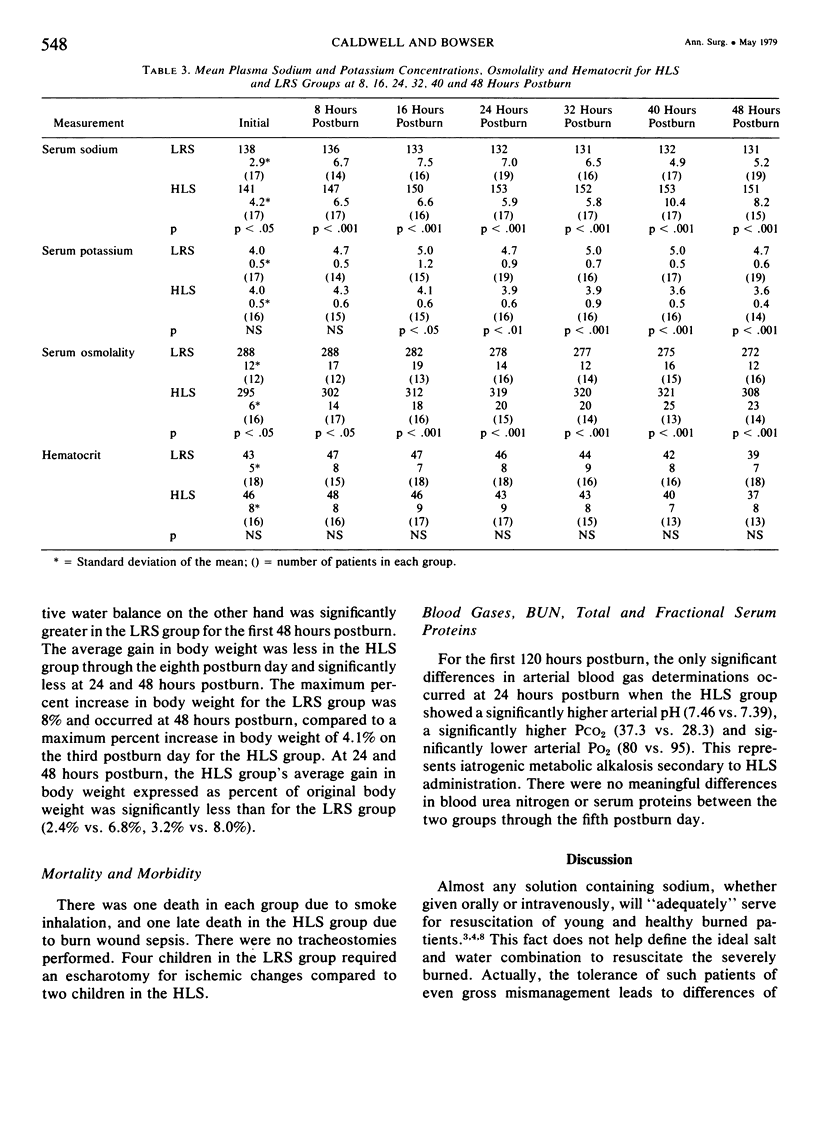
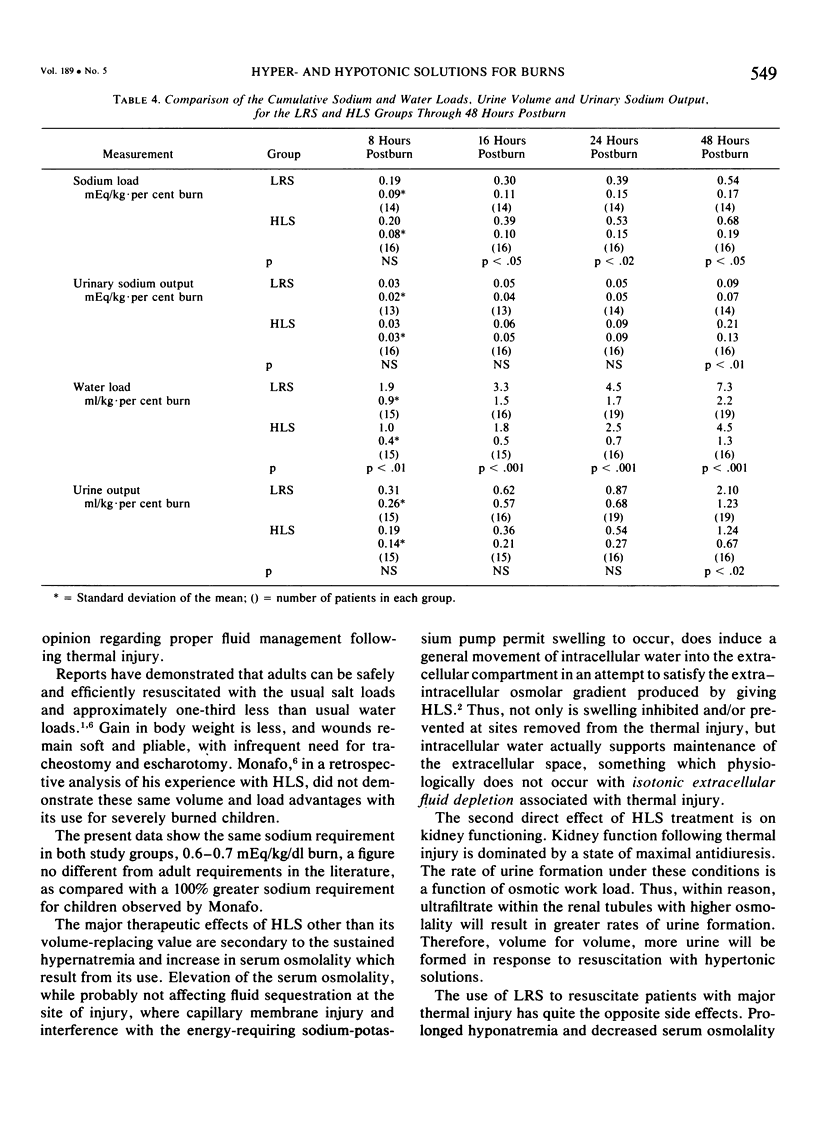
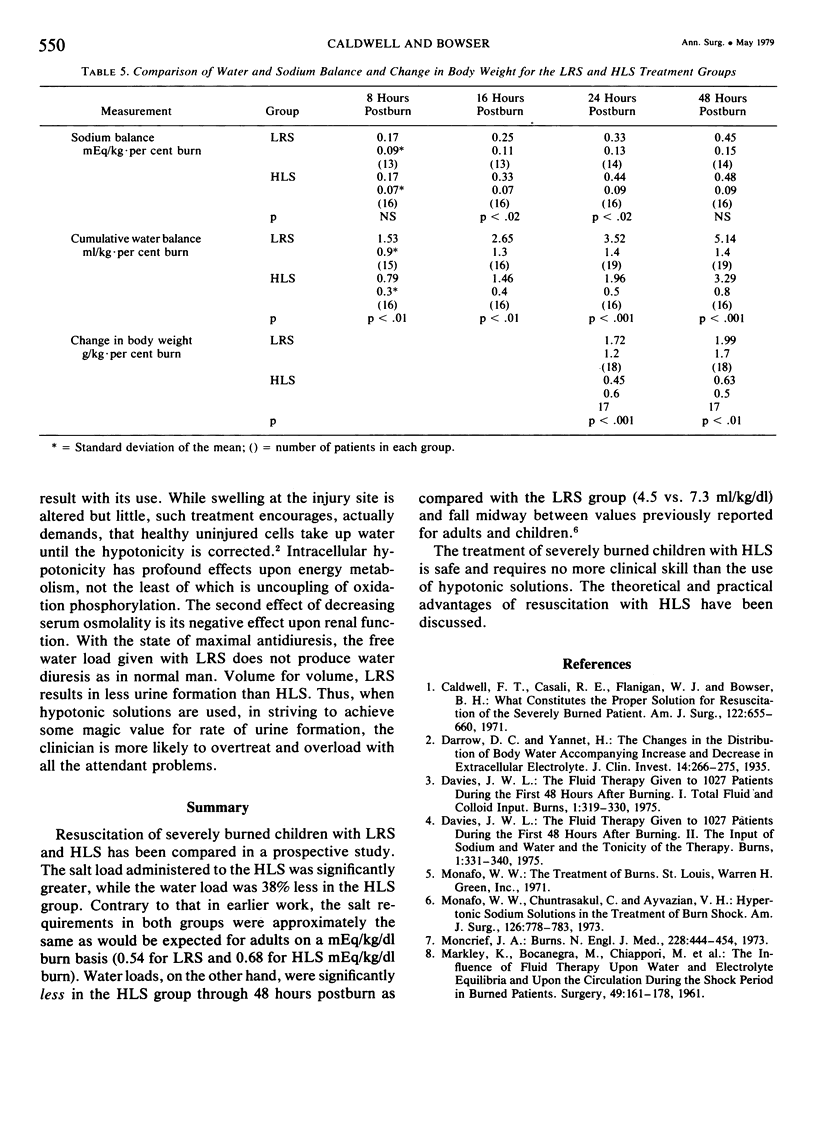
Selected References
These references are in PubMed. This may not be the complete list of references from this article.
- Caldwell F. T., Casali R. E., Flanigan W. J., Bowser B. What constitutes the proper solution for resuscitation of the severely burned patient? Am J Surg. 1971 Nov;122(5):655–661. doi: 10.1016/0002-9610(71)90294-7. [DOI] [PubMed] [Google Scholar]
- Darrow D. C., Yannet H. THE CHANGES IN THE DISTRIBUTION OF BODY WATER ACCOMPANYING INCREASE AND DECREASE IN EXTRACELLULAR ELECTROLYTE. J Clin Invest. 1935 Mar;14(2):266–275. doi: 10.1172/JCI100674. [DOI] [PMC free article] [PubMed] [Google Scholar]
- MARKLEY K., BOCANEGRA M., CHIAPPORI M., MORALES G., JOHN D. The influence of fluid therapy upon water and electrolyte equilibria and upon the circulation during the shock period in burned patients. Surgery. 1961 Feb;49:161–178. [PubMed] [Google Scholar]
- Monafo W. W., Chuntrasakul C., Ayvazian V. H. Hypertonic sodium solutions in the treatment of burn shock. Am J Surg. 1973 Dec;126(6):778–783. doi: 10.1016/s0002-9610(73)80070-4. [DOI] [PubMed] [Google Scholar]
- Moncrief J. A. Burns. N Engl J Med. 1973 Mar 1;288(9):444–454. doi: 10.1056/NEJM197303012880905. [DOI] [PubMed] [Google Scholar]


